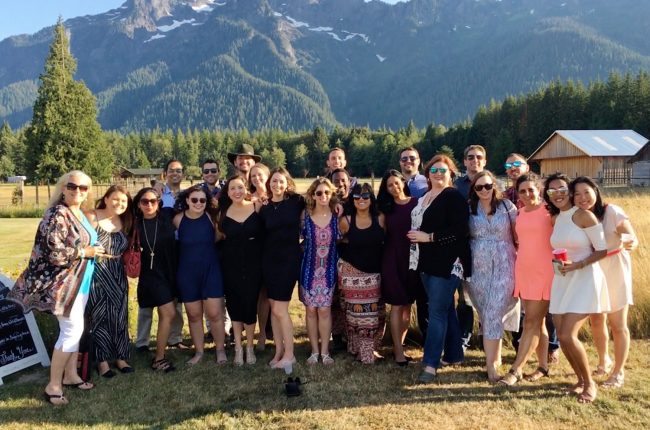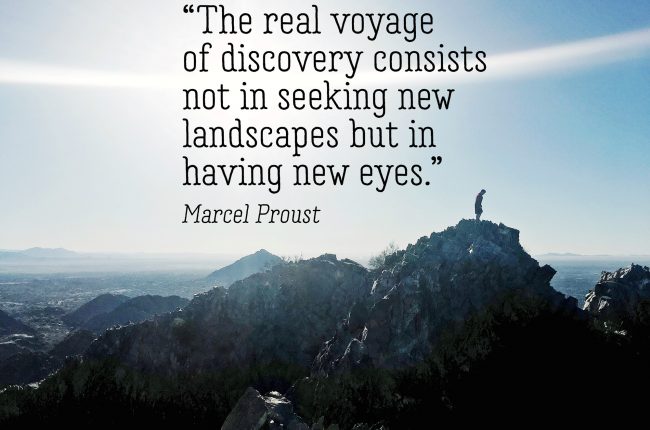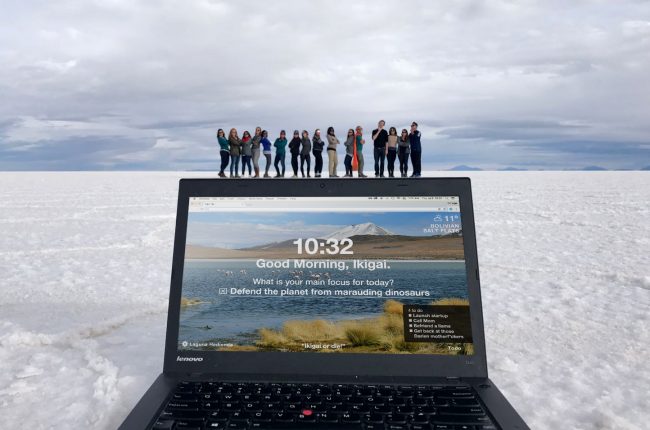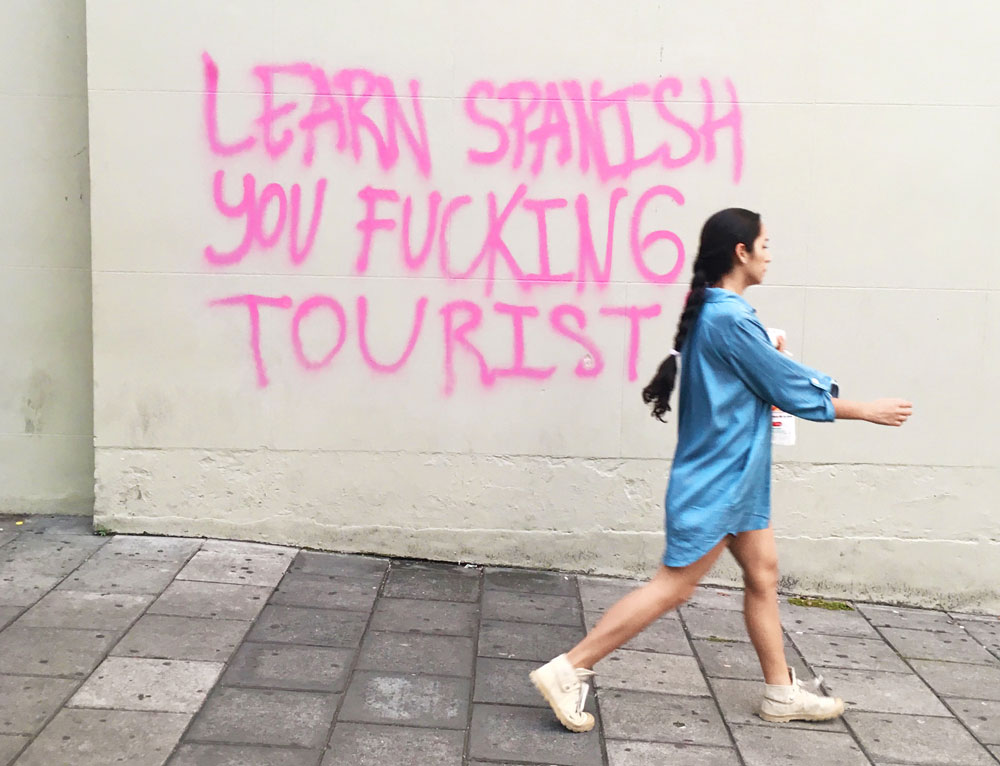
Yesterday I arrived in La Paz, Bolivia, all by myself for a couple days of solo travel. For the first time ever, I spent more of the day speaking Spanish than speaking English. It was one of my proudest days on Remote Year. It was basic Spanish, but it was still Spanish.
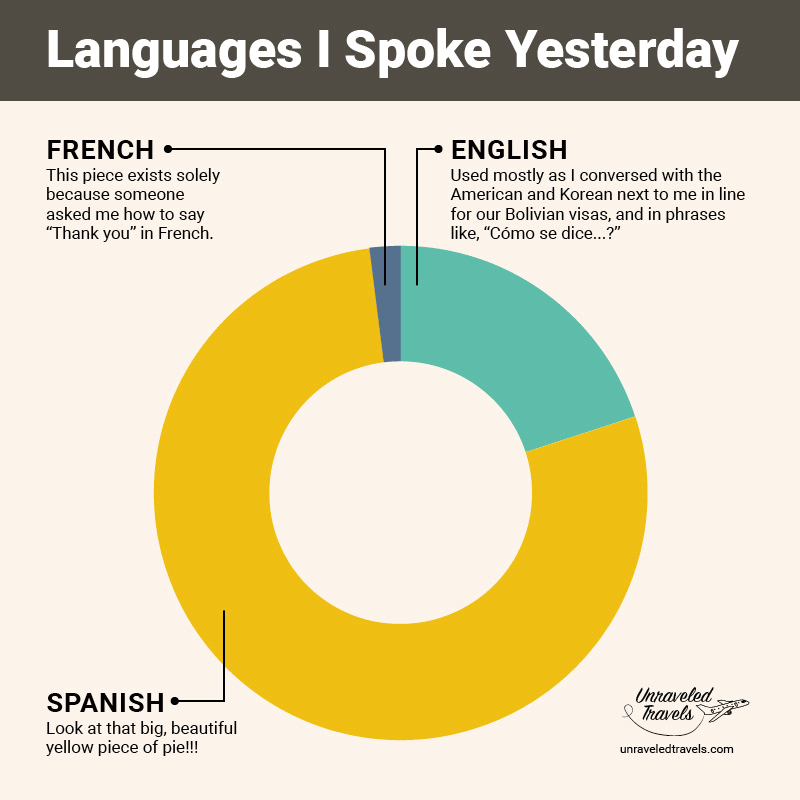
My First Test: Get into the Country
Upon arriving in La Paz, my first test was making it through the visa application. Americans have to apply for a visa to visit Bolivia, and Bolivian visas can only be applied for in your home country, or upon arriving at the boarder. Information about what is required for a Bolivian visa isn’t clear online. There are even a few discrepancies between the U.S. travel.gov website and the Bolivian government’s website. Nearly 40 of my Remote Year Ikigai crew is La Paz-bound tomorrow, so we group-researched the shit out of the process. The list of what you need to apply for a Bolivian visa at the boarder may or may not include the following:
- A printed copy of your online visa application form
- A photocopy of your passport (with at least 6 months of validity)
- Record of your accommodations and/or itinerary
- A photocopy of your immunization records showing proof of the yellow fever vaccine (if you’ve recently visited someplace with yellow fever, like Colombia)
- Two copies of a recent passport-like photo
- An invitation letter from a current Bolivian resident
- Bank account statement
- $160USD in crisp, unmarked U.S. bills without any rips or tears
Each document needs to be printed and ready to hand over to the immigration officials. I had all of this in my hand when I walked up to the desk after waiting for an hour in line and saw the sign that said in big, bold letters, “All visa applicants must show proof of a return flight to your home country.” That’s when my palms started sweating. A flight back to the U.S.? I know that I’m planning to head back Stateside sometime in September, but I don’t know when, let alone from where yet. My immigration officer didn’t speak any English, so I tried my best to appear calm, collected and fluent en español. He glanced at my application, swiped my passport, took a photo, then stuck a visa in my passport. The next officer folded the corner of my ream of application paperwork, took another photo of me, riffled through my passport, then stamped it and proceeded to try to explain the terms of the visa to me all in Spanish. I understood the gist of what he was saying (the visa is good for 90 days a year for the next 10 years). I nodded, said, “Entiendo,” and was waved on to customs. Success!
My Second Test: Get Around the City
I have found that Bolivians speak less English than just about any other country I’ve visited so far this year, which means I had lots of opportunity to flex my growing Spanish skills. Throughout the day, I was able to do the following while speaking Spanish almost exclusively:
- Converse with my Uber driver during our hour-long drive from the airport to my hotel. It helped that he was originally from Bogota, Colombia, so most of my conversation revolved around me saying things like, “Me gusta mucho Colombia. Me gusta Medellin. Me gusta Cartagena. Me gusta Santa Marta. Me gusta Tayrona. Muy bonita! Me gusta Bogota. Mucho graffiti en la Candelaria. Muy bonita!”
- Check into my hotel
- Get directions to an ATM
- Get directions to a mobile phone store
- Navigate the process of buying and activating a SIM card for my phone (experiencing for the third time the convoluted process of buying a SIM card in Latin America, which this time included feeding paper money into an ATM-like machine outside the store…still confused about that step)
- Get directions to two pharmacies in the attempt to purchase Pepto Bismol. (The day before I’d heard a report on NPR that studies show that taking 2 tablets of Pepto 4x a day reduces the chance of traveler’s diarrhea by 60%.) Sadly, apparently Pepto Bismol doesn’t exist in Bolivia. But at least I learned that while speaking Spanish.
- Get directions to a cafe with food and wifi
- Order said food…twice
Nowhere in that list is anything life-changing or all that impressive, but the proportion of Spanish > English was a memorable one for me. /pats self on la espalda
Also published on Medium.

